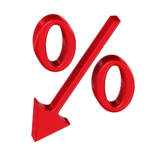

The insurer and public members of the Workers’ Compensation Rating Bureau Governing Committee have voted to authorize the Governing Committee to submit a lower mid-year pure premium rate filing to the California Department of Insurance.
The filing will propose a July 1 average advisory pure premium rate of $2.02 per $100 of payroll, which is 16.5 percent lower than the corresponding industry average filed pure premium rate of $2.42 as of Jan. 1. It’s 7.8 percent less than the insurance commissioner’s approved average Jan. 1 advisory pure premium rate of $2.19.
The committee cited a lower medical loss and allocated loss adjustment expense development, continued acceleration in claim settlement, and recent indemnity claim frequency decreases,
The decision was based on the WCIRB Actuarial Committee’s analysis of insurer loss and loss adjustment experience as of Dec. 31, 2016, which was reviewed at public meetings this year of the Actuarial Committee held on March 21 and April 3.
 The Actuarial Committee noted that cumulative trauma claims continue to increase, particularly in the Los Angeles region. In addition, medical severities are beginning to increase after several years of more modest severity trends driven by the worker’s comp reform bill, Senate Bill No. 863.
The Actuarial Committee noted that cumulative trauma claims continue to increase, particularly in the Los Angeles region. In addition, medical severities are beginning to increase after several years of more modest severity trends driven by the worker’s comp reform bill, Senate Bill No. 863.
Despite these upward pressures on system costs, the Governing Committee believed that lower frequency and favorable loss and allocated loss adjustment expense development, partially driven by increases in claim settlement rates, warranted a reduction in the industry average pure premium rate as of July 1.
The WCIRB anticipates submitting its filing to the CDI by April 14.
California Department of Industrial Relations Director Christine Baker issued a statement on the rate reduction:
“The 2012 reforms in SB 863 sought to increase benefits and improve care to injured workers while controlling rising costs for employers. Not only did benefits for injured workers increase by 30 percent, but an anticipated rate spike was prevented. Employers have had four consecutive rate reductions, and today’s recommendation will continue that trend.”
Related: